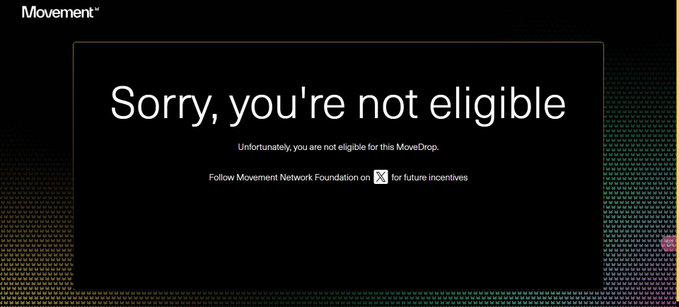Looking at various stories about getting rich quickly, I really didn’t expect Movement to be such a big deal.
I completely missed the Movement airdrop, but looking back now, I probably wouldn’t have participated.
I used to have a set of airdrop methodology:
(1) No rewards on the testnet: For projects in the testnet stage, the rewards for participating in airdrops are often not as good as those for projects after the mainnet is launched.
(2) Too complicated: A complex task system will reduce the enthusiasm of users to participate, and the final airdrop is often irrelevant to the task.
(3) Don’t airdrop unless it’s the top 100 or top 200 projects: In an already highly competitive market, the value potential of airdrops for projects that are not the top 100 or top 200 projects is relatively low.
Here we apply the previous methodology:
First of all, Movement is still on the testnet. I would not invest in projects that have not yet been put on the mainnet, because judging from historical projects, there are very few chances of making big profits on the testnet. Many projects will choose to carry out large-scale token distribution when the mainnet is online or closer to the official release.
Secondly, Movement has too many tasks, which feels very PUA to users. According to the principle of simplicity, Movement is obviously too complicated. Judging from the past public chain blockchains, which project’s airdrop rules would be very complicated?
Finally, Movement does not stand out among the numerous public chains. The Move-related public chains already have Sui and Aptos. According to the principle of only picking the first and second dragons in the race, the probability of picking the third dragon is not high.
In short, Movement belongs to the test network + complex task system + non-Dragon One and Dragon Two. How should I start with this project?
But no matter what, I still missed this opportunity to make money, which means that there is still room for improvement in my historical method.
Does that mean my airdrop methodology needs to be adjusted? Movement’s airdrop was probably an accident, and the probability of it happening is not high.
People's time and energy are always limited. If you try to apply for various projects, this kind of wide-ranging airdrop model will be thankless.
What I need to adjust is that when faced with such a project with a very luxurious investment background, I still have a certain sensitivity. I should focus on participating and can participate by using a small number of boutique accounts.
This way at least, there will be a big hair in the end, and your thigh won't be broken.
Airdrops also require emotional value.








